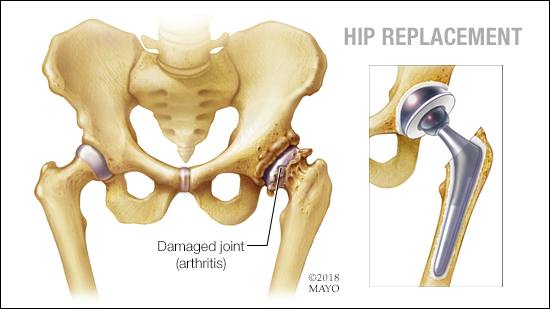-
Orthopedics/Sports

MANKATO, Minn. ― The summer weather inspires people of all ages to head outside and play sports. For seniors, pickleball has become a popular option, partly because the court is small enough that players don’t need to move very far to hit the ball.
But even with a sport that’s easier on a person’s joints, many people still suffer unnecessarily playing on aching hips and knees that need replacement.
“Fear is often part of the reason someone postpones surgery. They may have heard stories about hip and knee replacements from many years ago when recovery was painful and grueling,” says Jacob Ziegler, M.D., Orthopedics & Orthopedic Surgery, Mayo Clinic Health System. “That’s far from the case now. These are still major surgeries, but new techniques and technologies have greatly improved patients’ experiences and outcomes.”
Among those technologies is robotic-assisted joint replacement, which has revolutionized hip and knee surgeries. This technology allows the surgeon to:
- Perform enhanced, 3D preoperative planning and modeling to ensure there’s no impingement or pinching of nerves or tissues and to refine implant sizing and positioning for a high degree of accuracy.
- Prepare the bone and insert the implants with an unprecedented level of precision.
- Produce outcomes for patients that are more predictable and able to be reproduced in other patients.
A new service Dr. Ziegler is offering is smart knee replacement. A chip in the knee replacement uploads information about gait and mobility to alert care teams on the patient’s recovery.
“This service is particularly helpful to patients who live far from the hospital and don’t have close access to follow-up care,” says Dr. Ziegler. “We can intervene early if we receive data that any adjustments are needed. And if everything looks good, the patient then has the option to follow-up by phone or by virtual appointment.”
Another rapidly advancing technology in orthopedic surgery is 3D printing, which allows the designing and creation of custom implants to address challenging problems, including deformities, bone loss and unusual hip or knee anatomy. This promising technology needs more long-term data before it becomes widely used. Mayo Clinic is at the forefront of 3D printing and has been integral in advancing its clinical applications.
If a total hip or knee replacement is in your future, here’s what you can expect:
Hip replacements
Any patient who is a candidate for a conventional total hip replacement is a candidate for a robotic-assisted total hip replacement.
Hip replacements no longer are a one-technique-fits-all approach. With a 360-degree approach, your surgeon can tailor the surgery to you, choosing from direct anterior, posterior or anterolateral approaches. The surgeon will discuss these options and the entire surgical experience in detail with you during your pre-op consultation.
For most patients, total hip replacement surgery is either a same-day surgery or a one-night hospital stay.
Patients can walk and navigate stairs right after surgery.
The majority of patients will follow a self-directed physical therapy plan at home, with no need to go to an outpatient physical therapy facility.
Knee replacements
As with hip replacements, any patient who is a candidate for a conventional total knee replacement is a candidate for robotic-assisted total knee replacement. You’ll also take part in a comprehensive education experience and physical therapy assessment to review the technique your surgeon will use during surgery.
Like hip replacements, total knee replacements typically are same-day surgeries or may involve a one-night hospital stay.
Once you’ve awakened from the anesthesia, you can walk and navigate stairs. About one week after surgery, you’ll begin meeting with a physical therapist who specializes in working with knee-replacement patients. For best results with strength and range of motion, you’ll also be assigned daily exercises to do at home to supplement your physical therapy sessions at an outpatient facility.
“The great news is that for both total hip and knee replacements, the technology continues to evolve with the primary goals of reducing pain and enhancing function,” says Dr. Ziegler. “We want to get you back on the pickleball court, or enjoying any other sport of choice, as quickly as possible.”
For more information, visit Mayo Clinic Health System.
###
About Mayo Clinic Health System
Mayo Clinic Health System consists of clinics, hospitals and other facilities that serve the healthcare needs of people in Minnesota and Wisconsin. The community-based healthcare professionals, paired with the resources and expertise of Mayo Clinic, enable patients in the region to receive the highest-quality physical and virtual healthcare close to home.
Media contact:
- Amanda Dyslin, Mayo Clinic Health System Communications, newsbureau@mayo.edu
